
Pope Pius V, OP, born Antonio Ghislieri, was head of the Catholic Church and ruler of the Papal States from 7 January 1566 to his death, in May 1572. He is venerated as a saint of the Catholic Church. He is chiefly notable for his role in the Council of Trent, the Counter-Reformation, and the standardization of the Roman Rite within the Latin Church, known as Tridentine mass. Pius V declared Thomas Aquinas a Doctor of the Church.
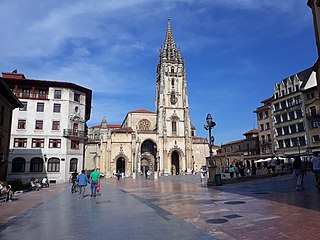
Oviedo or Uviéu is the capital city of the Principality of Asturias in northern Spain and the administrative and commercial centre of the region. It is also the name of the municipality that contains the city. Oviedo is located approximately 24 km (15 mi) southwest of Gijón and 23 km (14 mi) southeast of Avilés, both of which lie on the shoreline of the Bay of Biscay. Oviedo's proximity to the ocean of less than 30 kilometres (19 mi) in combination with its elevated position with areas of the city more than 300 metres above sea level causes the city to have a maritime climate, in spite of its not being located on the shoreline itself.

Fernando Álvarez de Toledo y Pimentel, 3rd Duke of Alba, known as the Grand Duke of Alba in Spain and Portugal and as the Iron Duke in the Netherlands, was a Spanish noble, general and diplomat. Alba achieved notoriety for his actions during the Eighty Years' War in the Spanish Netherlands, where his prolonged military campaigns and harsh repression failed to suppress the Dutch Revolt.
Iria Flavia or simply Iria in Galicia, northwestern Spain, is an ancient settlement and former bishopric in the modern municipality of Padrón, which remains a Catholic titular see.

Julian of Toledo (642–690) was born in Toledo, Hispania. He was well educated at the cathedral school, was a monk and later abbot at Agali, a spiritual student of Saint Eugene II, and archbishop of Toledo. He was the first bishop to have primacy over the entire Iberian Peninsula—a position he has been accused of securing by being complicit in 680 in the supposed poisoning of Wamba, king of the Visigoths—and he helped centralize the Iberian Church in Toledo. His elevation to the position of primate of the Visigothic church was a source of great unhappiness among the kingdom's clergy. And his views regarding the doctrine of the Trinity proved distressing to the Vatican.
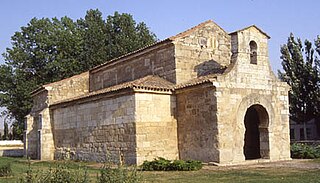
The Visigoths entered Hispania in 415 and they rose to be the dominant people there until the Umayyad conquest of Hispania of 711 brought their kingdom to an end.

Ildefonsus or Ildephonsus was a scholar and theologian who served as the metropolitan Bishop of Toledo for the last decade of his life. His Gothic name was Hildefuns. In the Ethiopian Orthodox Tewahedo Church he is known as Dexius based on the Ge'ez translation of legends about his life.

Saint Paulinus II was a priest, theologian, poet, and one of the most eminent scholars of the Carolingian Renaissance. From 787 to his death, he was the Patriarch of Aquileia. He participated in a number of synods which opposed Spanish Adoptionism and promoted both reforms and the adoption of the Filioque into the Nicene Creed. In addition, Paulinus arranged for the peaceful Christianisation of the Avars and the alpine Slavs in the territory of the Aquileian patriarchate. For this, he is also known as the apostle of the Slovenes.

Santhome is a locality in Mylapore in Chennai city in India.
The Lusitanian Catholic Orthodox Church is a church denomination in Portugal claiming to be both Catholic and Eastern Orthodox but in communion with neither the Catholic Church nor the Eastern Orthodox Church.

Saint Leocadia is a Spanish saint. She is thought to have suffered martyrdom and died on December 9, ca. 304, in the Diocletianic Persecution.

Severus of Barcelona is venerated as a saint by the Catholic and Eastern Orthodox churches. His legend states that he was a bishop of Barcelona and was martyred during the persecution of Christians by Diocletian in AD 304. Details concerning his life and death are uncertain and of questionable historicity.

Engratia is venerated as a virgin martyr and saint. Tradition states that she was martyred with eighteen companions in 303 AD.

Pelagiusof Oviedo was a medieval ecclesiastic, historian, and forger who served the Diocese of Oviedo as an auxiliary bishop from 1098 and as bishop from 1102 until his deposition in 1130 and again from 1142 to 1143. He was an active and independent-minded prelate, who zealously defended the privileges and prestige of his diocese. During his episcopal tenure he oversaw the most productive scriptorium in Spain, which produced the vast Corpus Pelagianum, to which Pelagius contributed his own Chronicon regum Legionensium. His work as a historian is generally reliable, but for the forged, interpolated, and otherwise skilfully altered documents that emanated from his office he has been called el Fabulador and the "prince of falsifiers". It has been suggested that a monument be built in his honour in Oviedo.
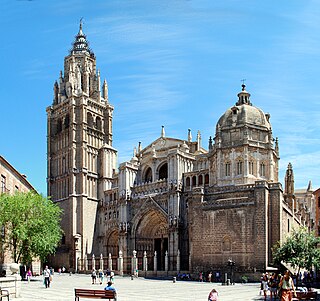
The Primatial Cathedral of Saint Mary of Toledo, otherwise known as Toledo Cathedral, is a Roman Catholic church in Toledo, Spain. It is the seat of the Metropolitan Archdiocese of Toledo.
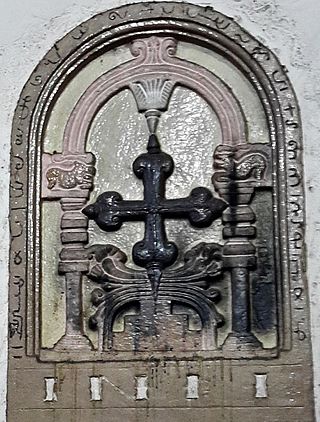
Mar Yaqob Abuna was one of the metropolitans of the Church of Malabar of the Saint Thomas Christians. In 1503, Mar Eliya V, the Catholicos Patriarch of the Church of the East consecrated three Bishops from the Monastery of Saint Eugene: Rabban David as Mar Yaballaha, Rabban George as Mar Denha, Rabban Masud as Mar Yaqob. The Patriarch sent these three new Bishops together with Mar Thomas to the lands of the Indians, and to the islands of the seas, which are within Dabag, and to Sin and Masin- Java, China and Maha china- Great China.
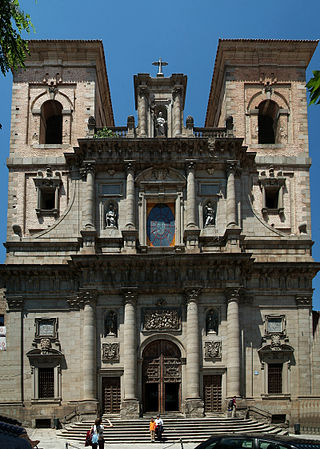
The Church of San Ildefonso is a Baroque style church located in the historic center of the city of Toledo, in Castile-La Mancha, Spain. It is also known as the Jesuit church and is consecrated to Saint Ildefonso of Toledo, patron of the city and Father of the Church.

The Convento de Santa Clara la Real is a convent of the Poor Clares located in the city of Toledo, Castile-La Mancha, Spain. The present convent was founded in the middle of the 14th century by Toledan noblewoman María Meléndez, and is located near other monasteries of note, such as the monastery of Santo Domingo el Real and the Convent of Capuchins of Toledo.

Saint Louis is a 1592–1595 painting by El Greco, painted during his time in Toledo. It is now in the Louvre in Paris.
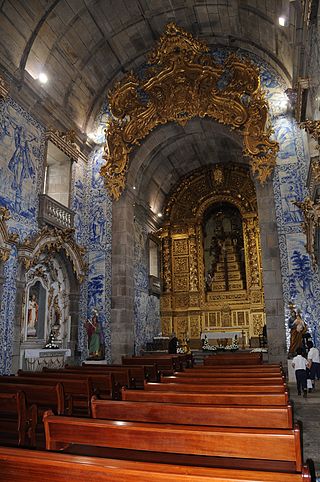
Victor of Braga, also known as Saint Victor, was a Portuguese Christian martyr. His feast day is 12 April.
















